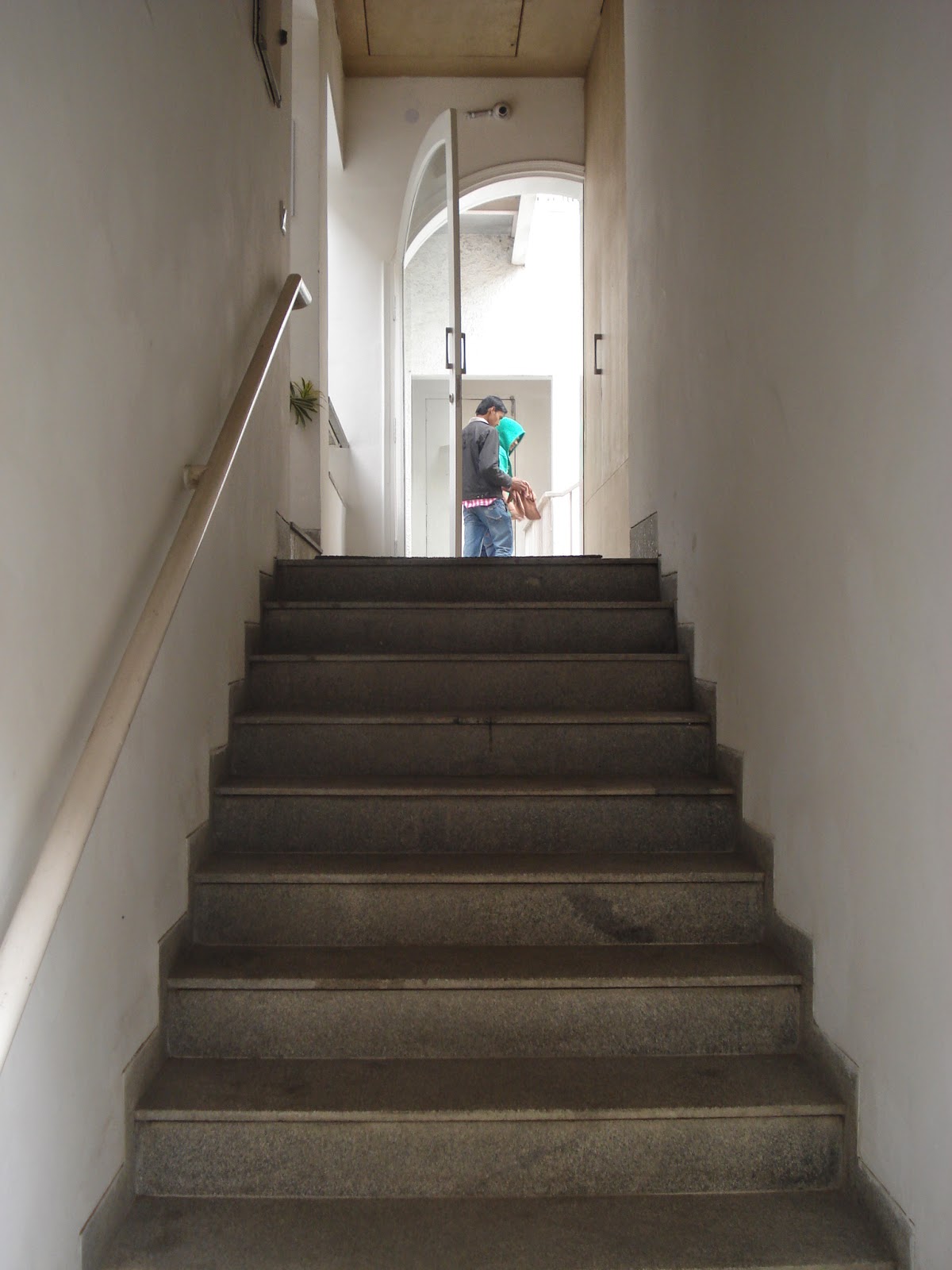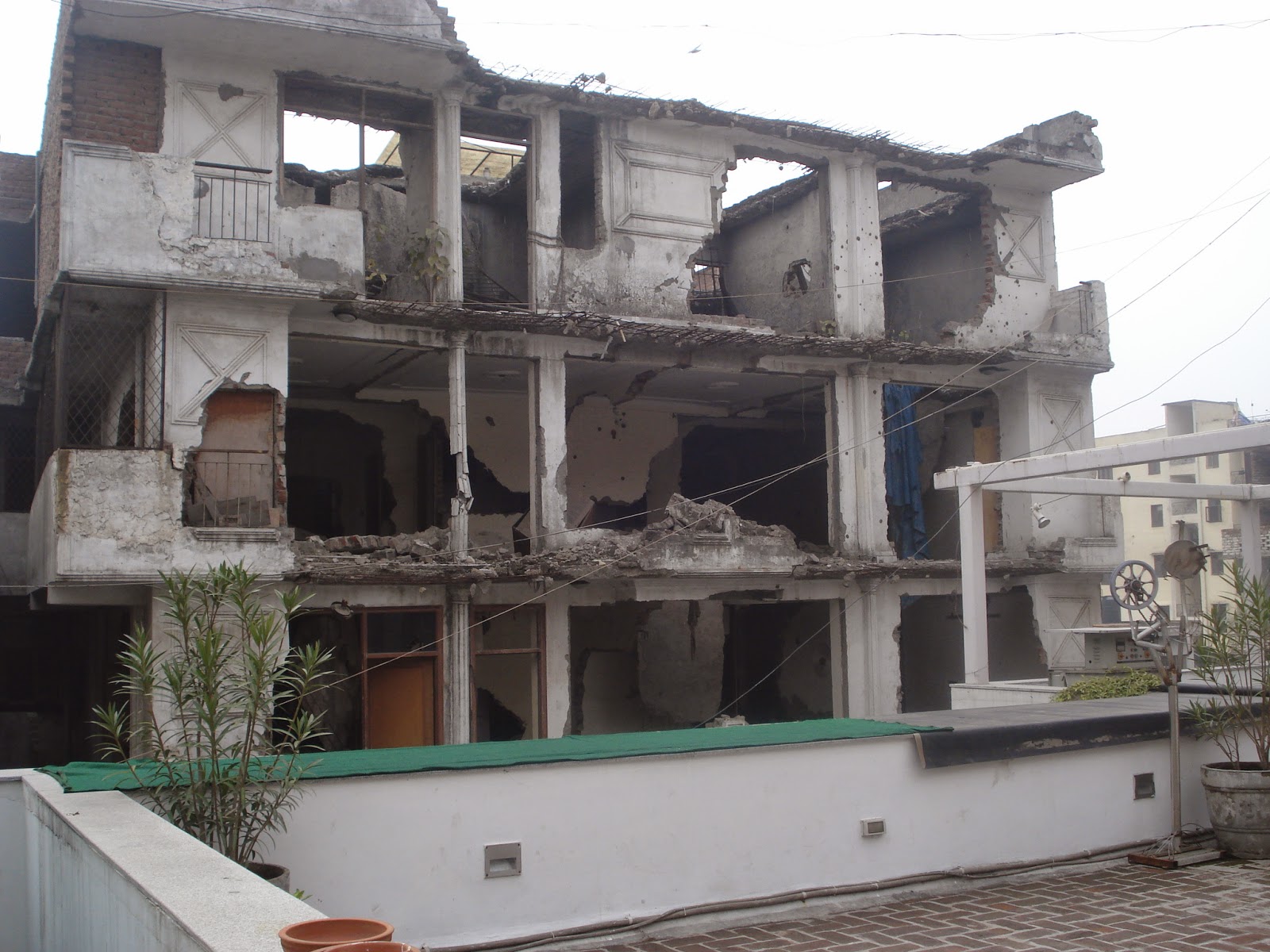In a recent meeting with the academic council at SEA, Prasad Shetty pointed out that while there are already many schools (of architecture) in our city, there is hardly any academic space. His observation particularly resonated with thoughts I shared in my essay '
In Search of Academic Space' before leaving for my masters' studies contributed for Rachana Sansad's magazine. In this same week, one of my cousins shared an article titled "
Mumbai's crime is its intellectual death" by Aakar Patel. Of most things that I disagreed in the reading, I found myself ambiguously convinced about the claim of the title. In parallel, at the studio CAMP (run by artists Ashok Sukumaran and Shaina Anand) whom I am presently assisting, Ashok too pointed out the lack of people in the city whom one could have a cultural discourse with. These recurring speculations on the feeble cultural space for discourse and discussion in a thriving cosmopolitan city like Mumbai made me wonder if there really is, a lack of space for dialogue here as compared to other places?
I wonder upon the claim of the city's intellectual death (or let's say the meager existence of cultural space) in light of the fact that every other year, we witness umpteen schools opening up, new courses designed for all kinds of people - working, traveling, migrating, students, adults; new centers for art and design and so on. This would certainly mean that a significant amount of population is being mobilized in the industry of teaching. Would teaching not mean to engage in a discourse? And would it not mean that we would have a good amount of 'thinking' population. However from the speculations mentioned earlier, the intellectuals of the city don't seem to think so.
Well, to consider that the population enrolled for teaching is 'thinking' may require some closer examination. Without a good survey, one would not be able to articulate any well rounded opinion. But what it certainly demands us to ponder upon is several aspects about 'teaching' and 'thinking' - what is the relationship between 'teaching' and 'thinking'? What differentiates the two, and how do they support each other? What does it mean to teach versus think? Finally, how does it create its own space, rather how should/can these practices carve a space for themselves? Subsequently, why is it important to have such a space and why has the city of Mumbai, after all, failed to sustain a space of discourse?
Prasad has shared an example on several occasions on the above dilemma. He says, "When a tree grows, one can understand it in many ways. One can be interested purely in what you put in and what you get out of the tree. That is, the amount of water, manure, fertilizers you put into nurturing the tree and what it produces in the form of product, as fruits, leaves, lumber, etc, (that can be sold in the market). The second way of looking at the tree is a list of 'how-s' under different conditions. For example, how does a tree behave, change, evolve, adapt or respond to the changing conditions of weather, watering, providing fertilizers, labouring and nurturing."
An academic or academia in general, he hints, must be about the latter way of looking at the object under scrutiny. While the first way of looking easily becomes an instrument of the market, or the capitalistic society in the current economic system, the second method sensitizes one to the dynamics of operation and helps intervening into it. Rather than simply consuming the norms laid by the system, one has to be able to ride on them not only towards one's own personal quests, but also to inquire, question and challenge them.
The question of the difference between teaching and thinking is complex. While it is popularly believed that teaching must enable a student to acquire enough skills to cater to the market, in other words, to understand how much to "put in" in order to "get maximum out", the academic space gears individuals to think of emerging situations and co-adapt and co-evolve with them. Providing vocational skills is what teaching often succumbs to. In the case of architecture, it would be to make sure that the student is able to draw out accurate and reasonably legible drawings using simple to complex softwares. Such a goal makes the teaching objective tangible far too quickly, and also gives a managerial agenda to the teachers - to make the students best in commanding any production tool they are handling. In addition, they want to enable students in architecture to achieve reasonable judgement over shapes and forms. Yet, this is not thinking, for it merely freezes thinking to a limited set of tools that students can utilize in their professional futures.
To think of a tool is different from merely using it to create a product. For example, to use AutoCAD for making architectural drawings is different from thinking of it as a tool to draw. It will be helpful to mention here, for example, that Prasad publishes many of his books on an application like Microsoft Powerpoint, in addition to using it as a presentation tool. What Prasad has successfully been able to exploit is Powerpoint's facility to work with text and images/graphics in a free flowing space. He constantly tweaks the features of the system to creates books of different formats, sizes; layering multiple graphics that seem at par with others produced using more sophisticated softwares today like CorelDraw or Adobe Indesign. Does it mean that we are underutilizing these new advanced softwares? Or does it mean what Prasad is abusing Powerpoint?
Neither. The answer lies in his example on the way we look at the tree. Prasad has simply understood that each of the softwares allows one to work with text and images in different capacities. And Powerpoint is able to offer him reasonable tools to create books and publish them at his will. Expoliting its features has saved him the trouble of investing time to learn a new, highly sophisticated software. Yet, this doesnot mean that he is unaware of the potentials of the software he doesnot know. But by being cognizant of the simple rubric which lies at the heart of these programs - ie the play between text and the image, he is able to gauge the capacities of each of these production tools.
Teaching and thinking are thus different, but mutually supportive. In today's world, one could confidently claim that teaching has become redundant. With the huge amount of tutorials and self-help platforms, teaching oneself is hardly a hurdle. One just needs access to basic infrastructure like an internet or a good library. Even without these, people in India have tremendous aptitude to adapt. Take a walk along the electronic lanes or the small mobile repair shops where you will find young drop-outs fiddling with mini components of the black box and getting your dysfunctional devices operational. This is a matter of practice, that skips text books or rote learning.
It is thus time to imagine of a form of teaching that facilitates thinking. We have to work towards a way of teaching that enable students methods of thinking and analyzing. But these pointers do not really tell us why the discursive space in a city like Mumbai has been dead? In my mind there are several speculations. Firstly, I feel there is a lurking dissonance of thoughts and values between the intellectuals of the city. They do not comply with each other and in general, there is a narrowed sense of respect. Respect is ghettoized. Secondly, there is a dire struggle to achieve power, to gain reputation. This has made the intellectual landscape extremely insecure, resulting into a kind of coldness, an inertness. Such insecurity manifests into perpetual bubbling of new institutions, where new monies are pooled in, and new resources are created. To talk in the field of architecture, there is no single space or archive which any one in the city has access to. There are no individuals or names in our city, as Aakar Patel rightly mentions as Mumbai's crime. There are no holistic institutions that offer space for different kinds of discourses to co-exist. There are several camps, there are several schools, but still thus, in my opinion, there is still a lack of an academic space.
(there are more thoughts, but in keeping the length of the blog post, more ideas will be discussed in some other writing over here subsequently)























